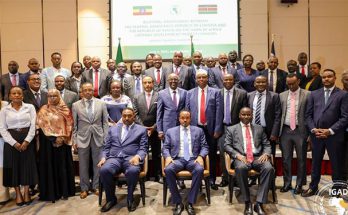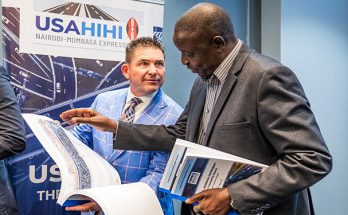 From the peak of exports worth around $17 million in 2011, which were dominated by textiles, exports under the AGOA pact to the US in 2016 were at a paltry $4 million.
From the peak of exports worth around $17 million in 2011, which were dominated by textiles, exports under the AGOA pact to the US in 2016 were at a paltry $4 million.
Constraints limiting Botswana from taking advantage of this preferential trade arrangement range from high production costs locally, especially due to relatively exorbitant cost of utilities and labour, inadequate pool of skilled manpower coupled with challenges in obtaining work permits for the required number of expatriates.
Botswana also has a reputation for poor competitiveness due to distance to market, limited production capacity and inconsistent quality of products.
This coupled with the stringent procedures, technical regulations and quality standards for goods headed for the US market has made it very difficult for local businesses to export their products under AGOA.
In an effort to reverse fortunes, government through the Ministry of Investment, Trade and Industry (MITI) with the assistance of the USAID Southern Africa Trade and Investment Hub have developed AGOA National Response Strategy which will be launched in two weeks aimed at unlocking Botswana’s export potential by taking advantage of the lucrative US market.
According to MITI permanent secretary Peggy Serame, the scope of the AGOA National Response Strategy supports the country’s long-term vision, Vision 2036, as well as the National Development Plan (NDP) 11. She sees the strategy serving as a tool to take the country’s industrialisation efforts to another level through developing the value chains of the identified potential sectors.
“Through the strengthened collaboration, Botswana envisions trade arrangement with the USA that would foster increased foreign investment for both goods and services during the implementation of the AGOA National response and beyond 2025,” she asserts.
US Ambassador to Botswana, Earl Miller believes that through the collaboration, the Hub’s trade and investment experts would work directly with the private sector to improve productivity and facilitate robust regional trade and global market access. Miller reckons that enhancing targeted value chains and building export markets for goods and services would remain core activities of the Hub.
USAID Southern Africa Trade and Investment Hub deputy chief of party, Malvern Rusike on the other hand says through their office, they would help local businesses with the utilisation of financial institutions, identify gaps and assist with capacity building towards effective delivery in terms of supporting the SMEs as they are usually weak in terms of getting financing.
“The strategy has identified the priority areas, the policies that must be used as well as the opportunities that exist hence the reason that in this term the strategy has identified the following sectors are priority; beef, textiles, arts and craft, as well as jewellery,” he says.
Over the years, Botswana’s AGOA number of goods exported to the US have not increased beyond 2012 levels dropping from a peak of $17.1 million in 2011 to $8.3 million in 2015, resulting in the country being ranked number eight out of the 12 AGOA eligible countries. In 2016, the country’s number of goods exported also dropped again to $4.8 million.
Textiles and apparel sector has been the country’s main AGOA beneficiary sector constituting between 90 to 100% of total AGOA exports for the country.
At its peak in 2011, Botswana had over 10 textiles and apparel firms exporting under AGOA.
Of these textiles and apparel firms that operated in Botswana, some have shifted focus from exporting to the US market towards South Africa while some have relocated mostly to Lesotho with others having closed down.
Potential benefits for Botswana from the AGOA unilateral trade preference programme include tariff exemptions, wide range of eligible products, opportunity for regional integration, capacity building of associations and institutions, promotion of women in social and economic development, job creation as well as giving local companies international exposure.
Under the tariff advantage, exports from Botswana would have a significant tariff advantage over those from non-AGOA eligible countries making Botswana products more competitive.
AGOA extension to 2025 also offers an increased range of eligible products, which allows a more diversified exports to US by Botswana as well as an opportunity to develop local value chains. On the other hand, AGOA facilities also provides an opportunity to create regional integration through the development of value chains, production sharing and collaboration to meet volumes required by the US market and for pitching the region as one big market.
Local institutions would also build their capacity and strengthen their processes through technical assistance and trade capacity building provided by the various US support agencies, such as the regional trade and investment hubs and others, whose mandate is to provide technical assistance in AGOA beneficiary countries to facilitate increased utilisation of the programme.
The AGOA extension and enhancement Act also encourages the promotion of women in social and economic development, as increased participation of women in labour would help increase the quantity and quality of available labour for industries involved in international trade.
Out of the 12 AGOA eligible beneficiaries in Africa, South Africa has been labelled the most diversified in sub-Saharan Africa and the biggest beneficiary country with their apparel and energy products, as well as vehicles exports.
South Africa and Angola exports constituted 87.7% of the total AGOA exports in 2015 and 87.3% in 2016 mainly because of the oil, automotive and mineral exports from the two countries.



